Duprasi are quite new to the pet world – and we have a lot to learn about them health-wise – but for now we only have a few stories about them and their intricacies. (article updated July 2022)
Unlike Mongolian gerbils and other more common jirds like Shaws and Bushy-taileds – these little critters have little information to go on.
But here is a start.
We got my first duprasi over 6 years ago (in 2016) and so have seem a bit of their nature and the problems they are prone to in our time – however now we have gathered the experiences of others and started breeding myself, we are seeing much more in the mix – so here goes so far:
Do Duprasi Get Scent Gland Tumours?
You will be glad to hear if you have kept Mongolian gerbils before – that although duprasi DO have an abdominal scent gland it is not known so far as the cause of any tumour-related conditions. So far, we have never heard of a fat tailed gerbil getting a scent gland tumour – thank goodness.
Duprasi scent glands are so different to Mongolian gerbils that this most likely explains the difference. Duprasi scent glands are very flat to the body and don’t have the distinctive texture and shape of a Mongolians. In fact most of the time, you can hardly see their scent gland – their fur just looks a little bit dishevelled and it might appear a bit darker underneath?
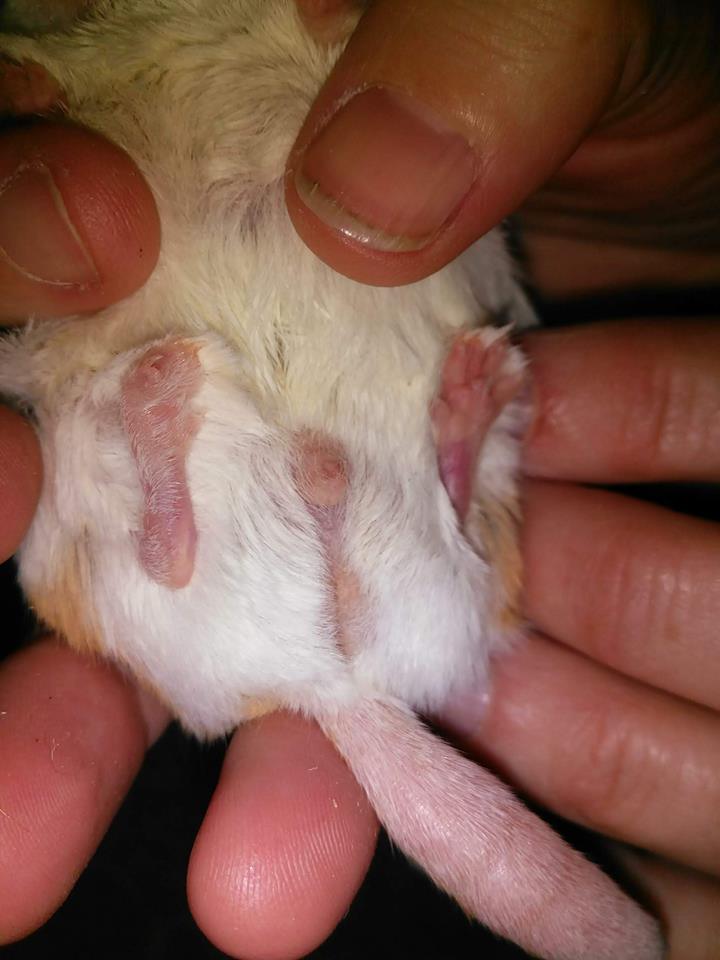
If you find anything red or brown, hard or flappy, sticky or swollen on your doops tummy, I would keep a close eye on it – or take them to the vet for a professional second opinion. Doops tummies are usually smooth and furry – so something might not be quite right there?
As far as we know, no other tumours are ‘common’ in duprasi either, although any tumour is possible.
Duprasi Get Bald Noses and Heads:
Duprasi can go from smooth heaven-like coats to greasy messes in term of coat condition – and quite often you might notice your doop has a bald patch – most likely on the nose, forehead or neck?
What is this???
As with all agouti-colored rodents, any rubbing on the tips of the hair – say from bar chewing or new-doorway-in-their-house-making will wear off the darker tips from their hairs leaving what looks like a totally different colour patch on their skin. It is the same hairs that were there before, but you are only seeing the ginger or gray parts of the individual hairs that are usually underneath.
All these bald patches will grow back eventually – but only if they stop rubbing them on whatever it was they were rubbing them on, so if you can’t change your cage around, your doop may always have a bald patch on their head?
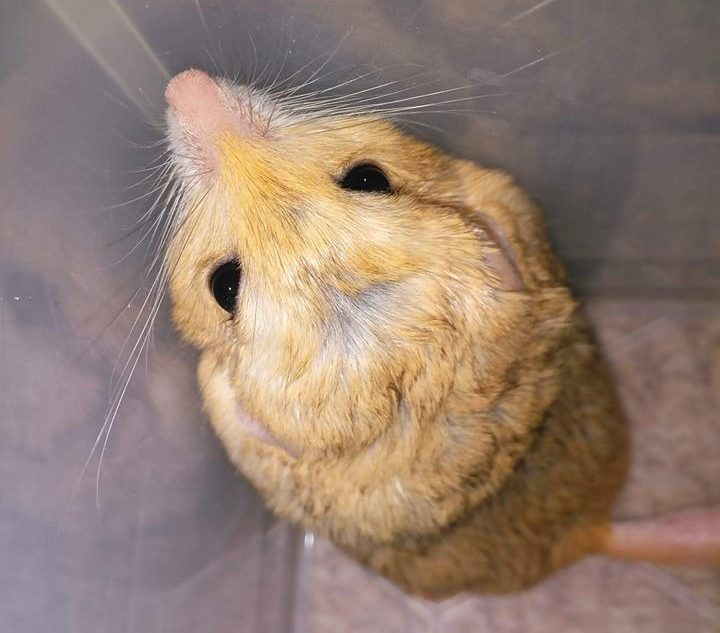
Do Duprasi Lose Their Teeth?
As with all rodents, there is the chance that your doop could break or lose a tooth during its life – however this isn’t something commonly reported for doops at the moment – although there are the odd reports. Obviously there aren’t as many doops in the world as rats and gerbils, but so far we haven’t heard a lot of it – so there is that at least.
Duprasi teeth are set up in the same way as other gerbils – 4 incisors at the front (2 at the top and 2 at the bottom) which line up perfectly. Then the rest of the teeth at the back – after the gap (diastema) are the molars and are mainly for grinding. Just like humans (but less often) duprasi can get dental problems including, broken teeth, overgrown teeth, abscesses and maloclussion.
So if you see any signs that there could be trouble in the mouth – including weight loss, pawing their face, drooling, lack of interest in favorite treats or bleeding – especially with ongoing eye trouble – a trip to a specialist vets is essential.
Very often a vet can help treat, burr, reallign or remove teeth to resolve the issue at least temporarily – and offer pain killers and specialised nutrition to help out.
Help, My Duprasi Is Losing Weight?
Unfortunately most rodents don’t really show us when they are unwell or have anything wrong with them – so sometimes weight loss is the first time we notice anything has changed. And usually weight loss in rodents is a sign of something serious that needs to be investigated fast.
Duprasi shouldn’t lose weight rapidly – although you may notice seasonal changes or big changes but over a longer time period. It isn’t unheard of for a doop to lose half its body weight over 3-6 months without actually having any health issues – so if you notice a weight loss do check how long ago you last weighed before panicking.
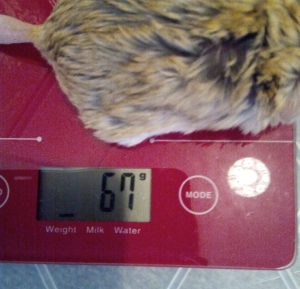
If it is rapid – then always your first stop should be: check the frontteeth. Damaged teeth or mouth pain are the first things to eliminate because the yare the easiest to resolve and treat. Don’t just assume that if the front teeth at still there and look fine that you are in the clear – as there can still be trouble on the molars. If in doubt at all – a trip to the vet could help have a closer look in the mouth.
Loose stools or digestive upsets can also cause weight loss, but you would most likely have noticed this in the enclosure as when stools aren’t well formed – they usually create quite a new odour! Needless to say you may notice their wheel needs cleaning out more often – but then doops are usually not likely to suffer from really loose stools.
Treating loose stools starts with increasing the fluids and stopping the solid food – so critical care food will be needed and/or electrolyte fluids – so it is good to have the vets on hand unless you have you own scales and supplies to help you. Highly nutritious moist food and fibre to start, gradually increasing to highly nutritious and highly accessible dry food as weight gradually increases and stools become normal. Slow and steady for sure.
Other reasons for weight loss are organ issues, like kidney or liver problems, as these can affect the amount of nutrients being absorbed by the body. So even if your doop is eating the normal amount of their food – the organs could be just spitting it all right back out.
Obviously these are best addressed with the help of a suitably experienced vet and most likely a dietary change to reduce or increase certain minerals to help with the organs themselves. Not impossible, but you will need to be in the know and be quite strict diet-wise.
Also, doops with eye trouble at the same time as weight loss could indicate an infection or other issue, but again – they are very difficult to diagnose – however steps can be taken to eliminate the more obvious things like teeth and allergies etc.
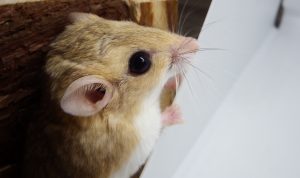
Can Doops Get Respiratory Infections?
Just as with any rodent kept in a confined space, they can be more susceptible to respiratory issues – therefore a well ventilated and DRY enclosure is essential.
Keeping duprasi in a well-ventilated tank environment can be the perfect set up for many reasons, however, if the tank is in the sun or is allowed to heat up or get ‘sweaty’ inside – especially if a water bottle has accidently leaked or part of the enclosure is soiled-based substrate – the dampness this creates in the tank if not removed/cleaned out can allow bedding particles to be inhaled causing breathing issues in their tiny lungs.
Similarly, a draught through their set up can equally affect their health – especially if it involves extreme temperature changes. We know duprasi are desert creatures, but when confined in one place (their enclosure) they don’t have the options to find a better/warmer/colder spot.
Stress caused by things like this or generally being unhappy with their current set up or location or tank-mate can make duprasi more likely to get health issues as their body is already running on the edge.
What Do Duprasi Usually Die Of?
So far, all we have read is that doops are most likely pass away for no obvious reason at all?
Most reports of non-symptomatic lost doops are sudden and unexplained – and usually much younger than the estimated 5-7 years predicted life span of many older websites.
Some people who have seen any symptoms have said their doop got stressed with mites or diarrhea and passed due to this; some comment on sudden weight loss too, and quite commonly ‘tail shrinkage’ (it is no longer fat), with a few more new entries with general eye issues either generally irritated; porphyrin leakage leaving red sticky tears; or a bit crusty and stuck shut. We have also had a few ovarian cysts and unconfirmed lumps. Symptoms and vet guesses are quite varied so far.
Hmm? We suppose it is good that there are no ‘known illnesses’ in doops like tumours in rats, or strokes in gerbils as this means they are still healthy with great genetic diversity?
Once they ‘all’ start getting the same things wrong with them, we know that we have started really sharing our husbandry results with the community – or we have inbred them too much and increased these things ourselves. But so far, we still don’t really know the full scope of doop illnesses and disease.
Anyway, we promise we will add to this when we get more health info – as currently we really haven’t had a long-term poorly duprasi?
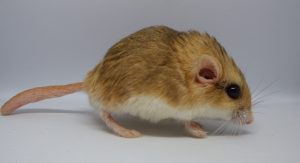
And just as a final note – so far there is no known evidence that doops can get coronavirus, either from humans or other animals. There are no current known cases of pet duprasi having coronavirus although it has been reported in other rodents and pets.
My duprasi is 3 and is losing weight – his tail is not as fat as it was He is not doing much but is eating some things. What do you think the problem is or is it just age?
Hey Judy.
First thing I would do – if you haven’t already – is check his teeth. Rodents are really prone to teething troubles and the first sign is usually weight loss, so you need to check he still has the front four teeth all present and that the two on the top jaw meet the bottom two in a straight line. If any of these teeth are missing or the teeth aren’t meeting straight, doops can have trouble eating some foods or eating becomes painful and so they start to eat less, and then lose weight.
Secondly, I would consider that he is getting older and so there could be environmental reasons why he is losing weight which can include wearing himself out in a large enclosure; overactive use of the wheel; living in an environment that he now finds stressful; being to warm or too cold, etc. All these could mean that he is not getting enough calories/nutrients in to him in respect to those he is losing/using.
Also, biological things could be affecting him too – things that only a vet could diagnose on I am afraid, like kidney/liver disease/failure etc or other health conditions that you can’t really see.
Making his tank easy to get around (flat layout, reduced ledges, food and water on ground level); making his food more easy to eat and gain nutrients from (shell-less seeds, high protein alternatives (mealworms/scrambled egg/baby food) and less empty calories); staying hydrated (offering moist foods and making the water bottle easier to access); as well as a steady and calm environment (not too hot/cold; not in a busy spot and not handled too much too often) can all help too.
Hopefully if it is just a passing thing he will be back on form soon – but 3 is quite a good age for a doop for sure.
Stay in touch,
RodentZone
Sad to say I had to have my duprasi put to sleep last week – the vet thought he had kidney problems – so this is one thing to add to list!!!!
I will look for another as he was a lovely little chap and a character!
Thank you for your advice
Ah, thank you Judith – and I certainly shall add this to the list, poor little chap. This is the first time I have heard a vet specify this for a doop.
You don’t say how old the little chap was and what were his symptoms that made you see the vet in the first place. All very useful.
Depending on where you are, I may be able to put you in contact with a breeder to help fill that gap he left behind.
Take care,
RodentZone
Any thoughts about Duprasi having issues with diabetes like chinchillas? I am to understand chinches don’t get much in the way of carbs in the wild, so replicating their natural diet is problematic, with the result often being diabetes. Perhaps the reason D. are so short-lived in captivity is that some feed D. too many carbohydrates?
Interesting question AJ – and I am not sure anyone has the answer just yet.
Doops haven’t been kept in large enough numbers by large numbers of people for a long enough time yet to be 100% sure. And I am sure not many people (if any) do post mortems on their lost pets. It still isn’t really well known what health complaints they get/experience or any ‘main’ cause for concern.
It certainly is something that we will find out more about as they hobby increases and more people try different things, but most keepers and breeders at the moment are quite conservative and so we aren’t hearing back enough differerent things. For example most breeders I know already keep Mongolian gerbils or Syrian hamsters and so mainly replicate that diet (with advisory increased protein – but of course Syrians and Mongolians also love more protein and don’t seem to have had any serious/linked health issues from an increase (but not excessive) amount of it that I have read (or experienced with my own gerbils).
However saying that, unless we start experimenting and recording more, we may not be sure even 5 or 10 years from now. Only when enough doops have started to pass away from very similar symptoms will we start to connect the dots. Same as we know about scent gland tumours and seizures being common in gerbils and diabetes being common in chins (before we knew the cause) – it takes time and a lot of lost pets to accumulate this knowledge.
And so far, thank goodness, I haven’t had a doop pass away, so I won’t know if my feeding regime, or those of my fellow breeders, is as balanced as a doop requires?
Do you have doops yourself – and if so – how long have you had them? I am certainly intersted in collecting data on lost doops to see if there is any accumulated pattern, particularily if these things could possibly be preventable.
I would love some feedback from anyone who is also interested in this area of duprasi health.
Thanks for bringing it up AJ
RodentZone
My 12 week old duprasi has got dry blood on his tummy. It was not there before we left the house but when we came back we found the blood. I do not know how it happened, but I did find a tiny bit of blood on the end of his privates. What do you think has happened?
Hello Paul – and sorry to hear your little one had got an injury of some sort. They are so fragile.
First thoughts at that age with a small amount of blood (and depending on how long you have had him in his current enclosure) would be a minor injury on something either sharp, sticky-outy or rough. I have heard of doops injuring themselves on all sorts from squeezing through small holes or recently-chewed or enlarged windows in houses, sharp substrate getting caught in the wheel and jabbing them or joins in a cage part of a topper or climbing area within some cages that are a bit spiky.
However, if nothing sounds like it might fit the bill for a contact injury (and remember to consider anything new to the set up including toys, tunnels, large treats and other accessories) perhaps also consider any new chemicals or scents used in the area of the enclusure or on your hands as they could have been an irritant and made him more itchy that usual – and he accidently over-groomed himself in that tender area?
Does anything so far sound like that could be the cause?
Definitely worth a look at toys and buildings. I’ve noticed a lot of the nicer looking wooden toys and houses, especially the ones with the bark still attached, are made mostly with little nails, like those from a small domestic nailgun.
As I’ve cleaned or repurposed some of ours over time, I’ve occasionally found nasty sharp bits sticking out where a corner might have been nibbled or other damage occurred and have had to take an angle-grinder to them. I now check every toy and building when each house has a proper clean-out.
Yes, Alex – it is always something we advise with any set up and toys/houses etc.
Always give everything a really good looking over at each clean out – just to be sure everything is as it seems!
Great advice indeed.
RodentZone
Thanks for the information! 🙂
We haven’t introduced anything new and we’ve had him for around 8 weeks, though he does like to squeeze through small areas.We also thought that possibly it could do with over grooming (like you said) as he likes to clean around the tender part.
He does seem very happy – particularly on his trixy wheel – so we aren’t too worried.
Thanks again!
I think we have found out what is wrong.
After cleaning his soft area, I picked him up and found some loose skin and blood on the end of his privates.It is probably from overgrooming.
He seems ok, but I am worried. It could be the sand bath – as we leave it in all the time – but I’m not sure.
Do you think it’s the sand bath that’s causing the irritation?
Hey Paul – yes sand baths left in all the time can sometimes (depending on your individual critter) can cause an issue either with the nose are or the privates (mainly with males).
Also depends which type of sand you are using – as it comes in all sorts of different cuts and sizes – some sharper or more abrasive in general. Perhaps limit his sand bath to just once a week incase he is over-using it, or change to a softer sand or more dust like substrate to see if this reduces the issue – as sometimes once something is scratched, it is quite satisfying to keep scratching it again and again even though it hurts. We all do it ourselves too.
Also, consider anything else environmental in the room (and by environmental I mean anything he come into contact with either physically or that could be in the air, or anything he eats or chews as these could also be the source of an irritation (potentially urinal)). So just be aware of any ‘new’ (meaning anything different at all in the week or so leading up to you spotting the blood) substrate, treats, houses, nests, tunnels, cleaning fluids, main food, bedding, air freshener, house clean, painting, hair spray, deodorant, etc, including garden/shed chemicals if you often have your window open – just incase you need to eliminate anything else to resolve the issue.
Anyway – hope he soon stops scratching it and you notice a huge improvement. If you don’t notice an improvement within a few weeks, then perhaps it was another cause?
Hi! I just check on my female doops. She have a blood on her private area😭😭😭. Please help me. She’s eating, playing and sleeping as usual. I’m afraid!
Hey sorry Snailena – we missed this before.
How is she now? Has the bleeding cleared up?
Was she in an enclosure on her own or was she with a male (or recently with a male)?
Hi there! I noticed my Duprasi’s tail really red as if it was irritated and almost looks like it’s peeling. We haven’t changed anything and her wheel isn’t sand paperish or rough. Her privates, stool, eyes, eating, have all been fine. Any idea what this could be?
Ah, Amberleigh – sorry to hear about your doop’s tail – and the fact it looks like it is peeling has us concerned as we havne’t seen this before.
We would assume that there is something either irritating the tail or you little one is being irritated BY the tail and so over-grooming it.
If you haven’t already booked up with a vet, we would certainly give them a call anyway to see what their appointments are like right now (you don’t need to book one – but if you aren’t registered with your doop – you will need to do this first anyway) but you could always do a few checks for yourself if you are concerned in the meantime.
Firstly – always check their teeth if you can – to make sure they are ok with eating.
Ideally to do this the easy way with the ‘Pot of Checks’ – simply pop them in a small container (ideally clear or opaque) with just kitchen roll on the base and leave in there for a good half hour. Also put in some sunflower or pumpkin seeds – in their shells – and a small bridge or something sturdy to climb on – and then just watch them solid.
This way in half an hour you can see that a) they can still crack shells open with their teeth and eat food; b) you can see that they are moving fine – there is no imbalance or dragging of the tail and how they climb; c) you can see if they are itchy, are they chewing their tail, what are they focussed on; d) you can see whether they can pee easily and what colour it is; and e) you can see whether they can poo easily and what does it look like.
5 easy tests to rule out a few things before speaking to or seeing the vet – not only does it save time for treatment, but it narrows down your focus to what could really be wrong.
One thing we will say though, is that if you think your doop is in pain or discomfort, then asking your vet for a painkiller should be high on your list of priorities. No animal should be in pain.
Hope that helps for starters – and hope it is just a mild irritation. Do keep us updated or ask away with any other advice.
RodentZone
I’m really curious about where the 5-7 year lifespan came from! My little doop was born February 2018 and has just recently passed away. He never had any serious health issues. Little bit of a greasy coat, abs her tail had some scars (he was rescued from a hoarding situation, we kept him alone). He was still chunky, fat tailed, and had a run in his wheel and a worm, then went to sleep and didn’t wake up. It’s sad but he lived a good life. From what I have seen 3 and a half years is quite long lived for them, so I’m so curious about this initial “report”.
(In fact in the Facebook group I’m in there seems to be an odd trend for them to lose weight and pass at 18months?)
Is there a secret other kind of doop? A long lived variant? 🤔
Hello Rachel – and we are really sorry to hear about your little guy. Always a sad day with the loss of a beloved duprasi – but yes 3.5 years is currently the top end average lifespan from what we have read or heard about through the past 5 years or so of our involvement in it.
We have been looking into this whole age issue for some time and have been contacting many different breeders and keepers past and present to find out more about the disparity between the historic 5-7 and the current life expectancy of 2-3. We have also started to contact all the websites that state the 5-7 as ‘the truth’ to ask them to modify it to reflect our current observable trend (not all of them have).
There are many possible reasons for this change in lifespan data (assuming the 5-7 was actually true in the first place) including diet, genetics and husbandry – as well as how many people were keeping them back in the 50/60s to accumulate this data – and in what numbers. Due to this unknowing – it is unclear if one or more factors are at play. We have recently spoken to owners with duprasi who reached 5 or near 5 years, so we know it is possible even if rare – and you are right that many doop on the group pass below the 2 years marker. It is certainly something we are looking in to in depth to see if there is something we can do about it.
Also, we are hoping to encourage a stronger connection between breeders and buyers so that we can find out which lines do better and how they are kept and fed – so that when someone does report a longer-lived duprasi – like your own little man – we can look at that particular line and see if we can spot any trends in breeding stock. The problem is that sometimes, by the time a duprasi reaches 5 years, not many relatives of theirs will still be alive to work with…
We keep our own stock from our lines where we can so that we can collect this data ourselves too. We currently have some who are approaching the 4 year mark in some lines, and others who passed sooner – so we can potentially tweak as we go – but this isn’t a speedy process by any means. We are also looking at making changes to their diet and enclosures to see if this has any effect overall on longevity. Sometimes lifespan and health aren’t easily linked as they look so healthy up until the last few days or so that without a post mortem it is virtually impossible to tell what the cause of death was.
If you are interested in looking in to this further or have any potential ideas or research yourself to help see if we can entend their lifespan – breeders on the FB group would be happy to start a conversation about it and look for solutions and/or improvements we are sure.
And if you find out about a long-lived variant – we would LOVE to hear about it too!!!